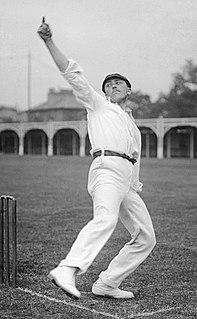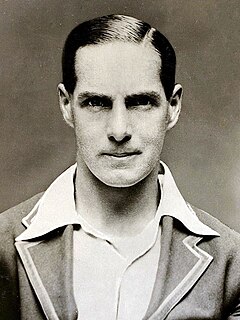 W
W1919 was the 26th season of County Championship cricket in England and the first since 1914. The authorities had doubted if cricket would remain popular after a four-year break and the strain of war. It was decided that County Championship matches should be reduced from three days' duration to two, but cricket had not lost its popularity and the two-day experiment was a failure. Yorkshire finished the season as champions, topping the table by four percentage points. No Test cricket was played but an Australian Imperial Forces team toured England, playing matches from mid-May until mid-September. Andy Ducat, Patsy Hendren, Percy Holmes, Herbert Sutcliffe and Ernest Tyldesley were named in the 1920 edition of Wisden Cricketers' Almanack as the Five Cricketers of the Year for their 1919 performances.
 W
WWhen the First World War ended in November 1918, thousands of Australian servicemen were in Europe as members of the First Australian Imperial Force (AIF) and many remained until the spring of 1919. In England, a new first-class cricket season was planned, the first since 1914, and an idea that came to fruition was the formation of an Australian touring side made up of servicemen. Agreement was reached with the Australian Corps HQ in London, commanded by Field Marshal William Birdwood, 1st Baron Birdwood, and the Australian Imperial Force Touring XI was formed, initially under the captaincy of pre-war Test player Charlie Kelleway. Kelleway departed after only six matches following a dispute about the fixtures list. A players' meeting elected future Test player Herbie Collins as team captain for the remainder of the tour, despite the fact that Collins' military rank was lance corporal and there were seven officers in the party. The bulk of the team remained intact for nearly nine months from May 1919, playing 33 matches in Great Britain, ten in South Africa on their way home and then another three in Australia itself before disbanding in February 1920. Of the 46 matches, 39 are adjudged first-class and the team had only four defeats, all of these in England. The players lived on their army pay and all profits from gate money went to an AIF Sports Control Board.
 W
WThe Indian cricket team toured England in the 1932 season under the title of "All-India". They were captained by the Maharaja of Porbandar. It was the national team's second tour of England following the one in 1911. India had just been granted the status of ICC Full Member and they played their inaugural Test match at Lord's in June. It was the only Test arranged on this tour and England won by 158 runs after scoring 259 and 275/8d in the two innings while India were bowled out for 189 and 187.
 W
WThe South African cricket team toured England in the 1935 season to play a five-match Test series against England.
 W
WHerbert Sutcliffe made his first-class debut for Yorkshire in the 1919 season, during which he and Percy Holmes developed one of county cricket's greatest opening partnerships. After initial success, Sutcliffe had a couple of relatively lean seasons before fulfilling his promise in 1922. In 1924, he made his debut for England in Test cricket and formed a famous Test opening partnership with Jack Hobbs. He enjoyed personal success on the 1924–25 MCC tour of Australia, although England lost the Test series 4–1 to Australia. In the 1926 Ashes series against Australia, Hobbs and Sutcliffe produced a series-winning partnership at The Oval in difficult batting conditions. By the end of the 1927 season, Sutcliffe was one of the world's premier cricketers and was being considered, although he was a professional, for the captaincy of Yorkshire.
 W
WDuring the five years 1928 to 1932, Herbert Sutcliffe played throughout the period for Yorkshire, continuing his highly successful opening partnership with Percy Holmes which reached its peak of achievement in 1932 when they set a then world record partnership for any wicket of 555, the stand including Sutcliffe's career highest score of 313. For England in Test cricket, Sutcliffe made his only tour of South Africa in 1927–28 and his second tour of Australia in 1928–29, during which he played arguably the greatest innings of his career. In the winter of 1930–31, he and Jack Hobbs went on a private tour of India and Ceylon which has caused some controversy in terms of their career statistics. Sutcliffe opened the innings for England throughout the period, playing in home series each season but most notably against Australia in 1930.
 W
WDuring the seven years 1933 to 1939, Herbert Sutcliffe played throughout the period for Yorkshire during one of the club's most successful phases. His Test career ended in 1935 but he formed a new opening partnership for Yorkshire with the young Len Hutton. In 1939, he was the first Yorkshire player to be called up for military service as the Second World War loomed.